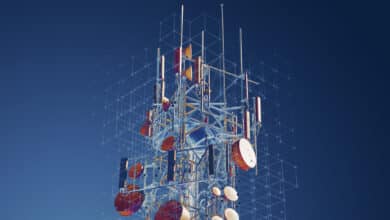All Post-Quantum, PQC Posts
-
Post-Quantum, PQC, Quantum Security
Cryptography in a Modern 5G Call: A Step-by-Step Breakdown
Modern telecommunications networks rely on multiple layers of cryptography at every step of a call or data session. Understanding the complexity of the process and the amount of cryptography involved is critical for post-quantum migration planning - an initiative some of my advanced telecommunications clients are kicking off these days. And many are widely underestimating how much cryptography is used. From the moment a user’s…
Read More » -
Post-Quantum, PQC, Quantum Security
Ready for Quantum: Practical Steps for Cybersecurity Teams
“How do we actually get started and secure the budget for this, now?”. This comprehensive guide is the answer: a practical, step-by-step playbook for launching and running a quantum security program, updated with the latest lessons on budgeting, cryptographic inventory, risk mitigation workarounds, challenges of post-quantum migration, and achieving crypto-agility in a pragmatic way. We’ll bridge the gap between high-level warnings and on-the-ground execution, giving…
Read More » -
Post-Quantum, PQC, Quantum Security
Next-Generation QKD Protocols: A Cybersecurity Perspective
Traditional QKD implementations have demonstrated provably secure key exchange, but they come with practical limitations. To address these limitations, researchers have developed next-generation QKD protocols. These advanced protocols improve security by reducing trust assumptions and mitigating device vulnerabilities, and they enhance performance (key rate, distance) through novel techniques. The article includes a high-level overview of the most notable next-gen QKD protocols.
Read More » -
Post-Quantum, PQC, Quantum Security
Evaluating Tokenization in the Context of Quantum Readiness
As the quantum era approaches, organizations face the daunting task of protecting their sensitive data from the looming threat of quantum computers. These powerful machines have the potential to render traditional cryptographic methods obsolete, making it imperative to explore innovative strategies for quantum readiness. One often overlooked yet highly promising approach is tokenization.
Read More » -
Post-Quantum, PQC, Quantum Security
Quantum Computing – Looming Threat to Telecom Security
Since the early 2000s, the field of quantum computing has seen significant advancements, both in technological development and in commercialization efforts. The experimental demonstration of Shor's algorithm in 2001 proved to be one of the key catalyzing events, spurring increased interest and investment from both the public and private sectors.
Read More » -
Post-Quantum, PQC, Quantum Security
Adiabatic Quantum Computing (AQC) and Impact on Cyber
Adiabatic Quantum Computing (AQC), and its variant Quantum Annealing, are another model for quantum computation. It's a specialized subset of quantum computing focused on solving optimization problems by finding the minimum (or maximum) of a given function over a set of possible solutions. For problems that can be presented as optimization problems, such as 3-SAT problem, quantum database search problem, and yes, the factoring problem…
Read More » -
Post-Quantum, PQC, Quantum Security
CRQC Readiness Index Proposal
This proposal outlines a composite, vendor‑neutral “CRQC Readiness” indicator. It intentionally avoids one‑number vanity metrics (like only counting qubits) and instead triangulates from three ingredients that actually matter for breaking today’s crypto: usable (logical) qubits, error‑tolerant algorithm depth, and sustained error‑corrected operations per second.
Read More » -
Post-Quantum, PQC, Quantum Security
Understanding FIPS 140: A Cornerstone of Cryptographic Security
FIPS 140 (Federal Information Processing Standard 140) is a U.S. government computer security standard that specifies security requirements for cryptographic modules - the hardware or software components that perform encryption and other cryptographic functions. In simpler terms, FIPS 140 sets the ground rules for how encryption engines (in everything from software libraries to hardware appliances) must be built and tested to be considered secure. The…
Read More »







